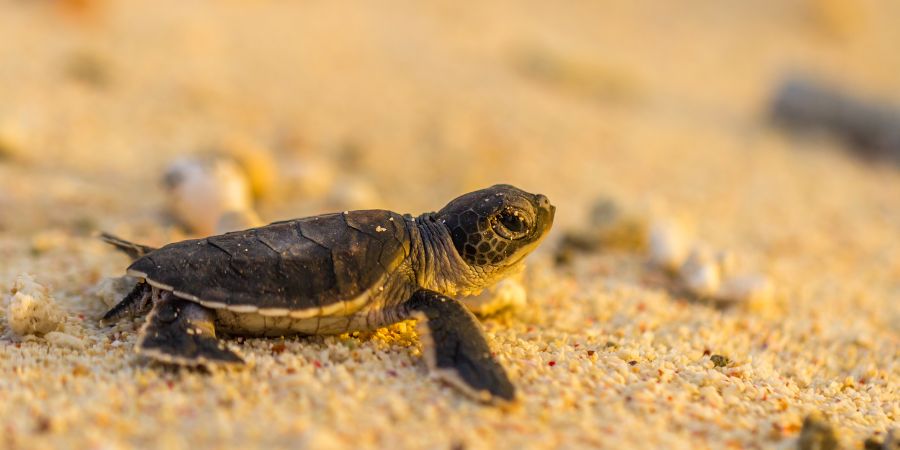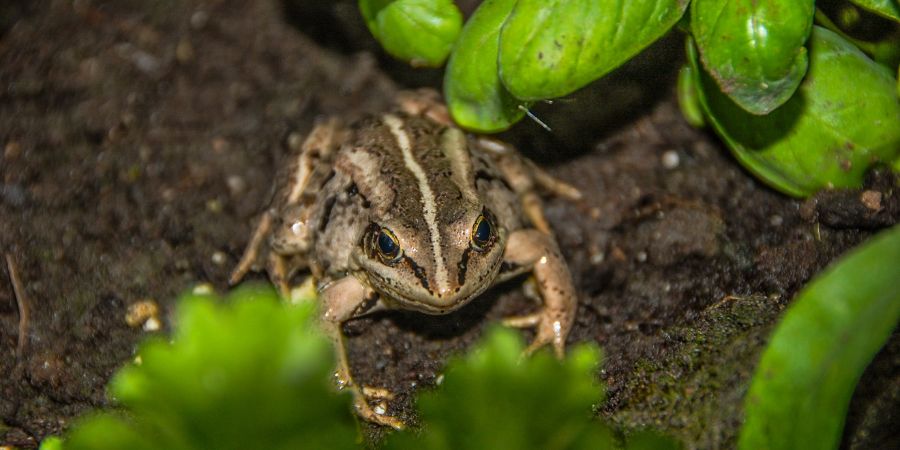Why Turning Off Your Lights at Night Helps Wildlife
- Gardening Expert and Host of Growing a Greener World®February 15, 2025
It’s easy to overlook the impact of outdoor lighting, but as gardeners, we know that what we do in our own backyards affects the broader ecosystem. Artificial light at night (ALAN) disrupts wildlife in ways we don’t often consider—interfering with migration, feeding, reproduction, and survival for countless species.
From birds and insects to amphibians and mammals, many creatures rely on natural light cues to navigate the world. Excessive nighttime lighting can throw those instincts into chaos, leading to dangerous and unintended consequences. The good news? Simple changes to our lighting habits can make a world of difference. Let’s take a closer look at some of the perils we unknowingly put wildlife in when we leave the lights on.
Artificial light affects wildlife in several ways. Here are some of the most notable.

Baby Sea Turtles, upon hatching, are drawn to artificial light and away from the ocean. It’s perhaps the one we are most familiar with related to the fatal attraction of artificial light. Even in total darkness, the defenseless hatchlings already have the odds stacked against them just to make it to the water. But when shoreline homes, condos, buildings, and more leave the lights on, those newly hatched turtles are drawn like magnets to the light and away from the ocean’s relative safety. The result is an exponentially greater risk of death due to exposure and predation.
Birds become disoriented. Millions of birds migrate at night, using the stars and moon to guide their way. Bright artificial lights, especially in urban areas, can confuse them, causing fatal collisions with buildings or exhausting them as they fly in endless circles. Even in suburban and rural areas, excessive light pollution can interfere with their ability to navigate safely.
Moths and many other nocturnal insects are drawn to artificial lights, often with deadly results. This attraction can exhaust them, make them easy prey, or disrupt their natural behaviors like pollination. Moths are essential pollinators for night-blooming plants, a major food source for birds, and their rapid decline is yet another reason to be mindful of unnecessary lighting.
Amphibians such as frogs and toads rely on darkness to signal their calls to mates. If you've ever enjoyed the sound of frogs calling on a summer night, artificial light could be cutting that chorus short. A consequence of excessive lighting can interfere with reproduction, leading to population declines.

Birds of prey, and many mammals, including bats, rely on darkness for hunting, foraging, and avoiding predators. Artificial light can push them out of their natural habitats or interfere with their food sources, causing ripple effects throughout the food chain.
We can make a difference! If you want to support wildlife while still maintaining necessary lighting for safety, here are some simple yet effective actions to take:
-
Turn Off Unnecessary Lights. The simplest step is also the most effective—turn off porch lights, floodlights, and other outdoor lighting when not in use. Not only does this help wildlife, but it also saves energy.
- Use Motion Sensors and Timers. If you need outdoor lighting for security, opt for motion-activated lights rather than keeping them on all night. Timers can also ensure lights turn off during peak hours of wildlife activity.
- Choose Warm, Low-Intensity Lighting. Bright white and blue-toned LED lights are particularly harmful to nocturnal species. Instead, use amber, red, or warm-colored bulbs with low intensity (under 3000K on the Kelvin scale), which are less disruptive.
- Shield Lights to Direct Them Downward. Unshielded lights send glare into the sky, contributing to light pollution and disrupting wildlife. Use downward-facing fixtures with shields to keep light where you need it—on pathways and entryways—while minimizing its reach into the night sky.
- Opt for Solar-Powered or Firefly-Inspired Alternatives. If you want to enjoy a little light in your garden at night, consider using soft solar lights with a warm glow or even planting native plants that attract fireflies. These natural alternatives bring magic to your garden without harming wildlife.
- Create Dark Corridors. Wildlife needs undisturbed dark spaces to thrive. If you have control over your property, designate dark corridors by reducing light exposure in garden beds, along fence lines, or around wooded areas.
- Participate in 'Lights Out' Programs. Many cities and conservation groups promote “Lights Out” initiatives, encouraging homeowners to turn off lights during peak bird migration seasons. You can check if there’s a local effort near you or simply adopt the practice on your own.
By making small adjustments to our lighting habits, we can create safer, more natural environments for the wildlife we love. As gardeners, we already think about how our choices impact the ecosystem—from the plants and lawns we grow and maintain, to the soil we nurture. Reducing light pollution is just another way to help protect wildlife and support biodiversity right outside our doors.
So next time you head inside for the night, consider flipping the switch—your local wildlife will thank you.

